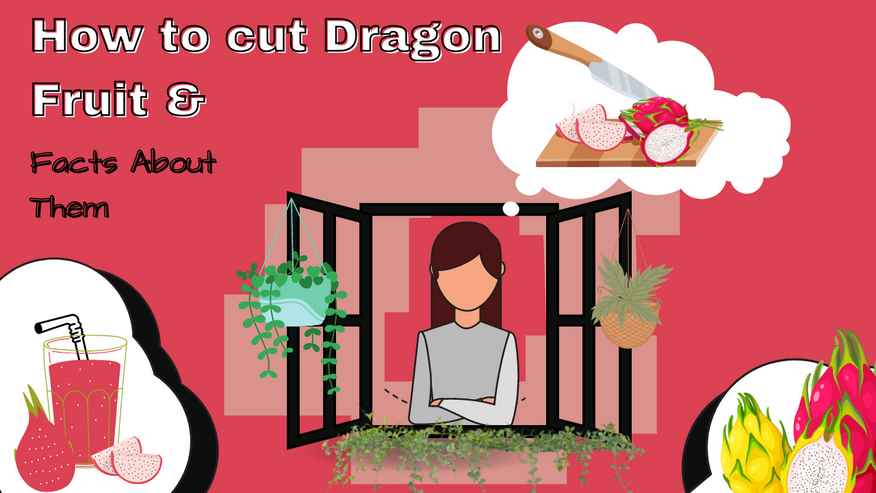May 23rd 2022 - Monica Cunanan
How to Easily Cut a Dragon Fruit —Health Benefits and Facts
- A tropical fruit known as dragon fruit has grown in popularity in recent years. The fruit was believed to have originated in Mexico and portions of Latin America, where it was known as "pitaya,".
- After being introduced to Asian countries, this exotic fruit was nicknamed "dragon fruit" due to its fireball-like appearance.
Though it is well-known for its unusual appearance and flavor, research suggests that it may also have health benefits. Let's learn how to cut this tropical fruit
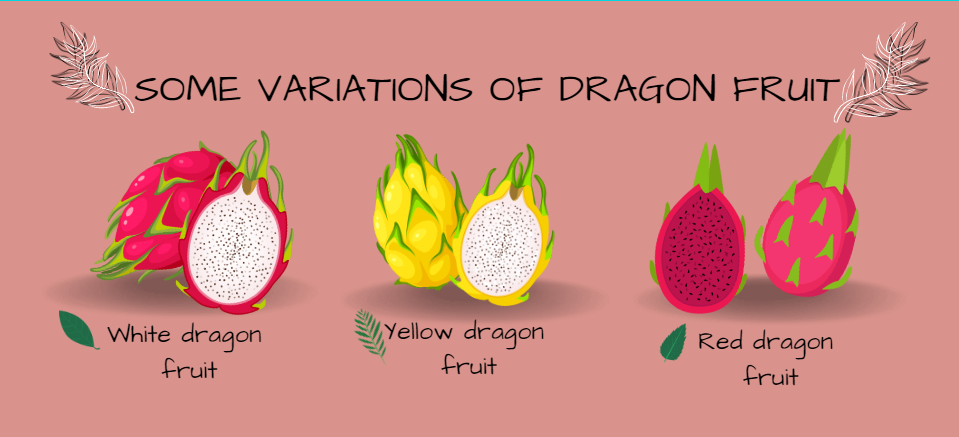
*Special Note: The sweetness of the ripe dragon fruit depends on the color of its flesh. White Dragon Fruit taste has a mild flavor profile compared to the darker colored fruit variety.
Different varieties of dragon fruit are available in grocery stores and here are some of them:
- White Dragon Fruit: red outer skin with white flesh,
- Yellow Dragon Fruit: yellow outer skin with white flesh
- Red Dragon Fruit: red outer skin with red flesh
Before we look at some facts about it, let's learn how to cut this tropical fruit:
Method 1: Traditional Cut
Cutting a dragon fruit isn't as difficult as you may think. It has soft flesh, so it would be easy for you to cut it into the shape that you want.
You will need the following: A cutting board, knife,or chosen dinnerware for serving!
(Optional: sealed zip-top bag or covered container for storing in the fridge)
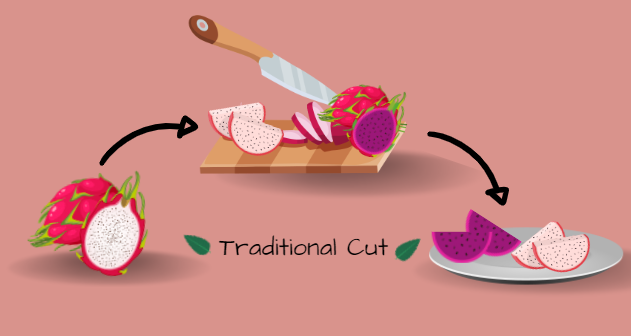
- Place it on a clean cutting board.
- Using a large sharp knife, cut straight through the middle.
- Take a large tablespoon and slide it in between the skin and the flesh and scoop out the flesh just like how you would do with an avocado.
- Place the scooped flesh back on your cutting board flat-side down and cut excess outer skin. You can now cut up dragon fruit in any way you like.
- You can opt for quarter cuts, semicircles, or chop them into cubes or chunks. Put them on your plate or bowl and serve!
Always remember that freshly cut dragon fruit is the best!
Method 2: Peel off the skin instead
An alternative to cutting using a knife is simply just peeling the skin off using your fingers. Dragon fruits feature a delicate outer skin on top of their soft flesh.
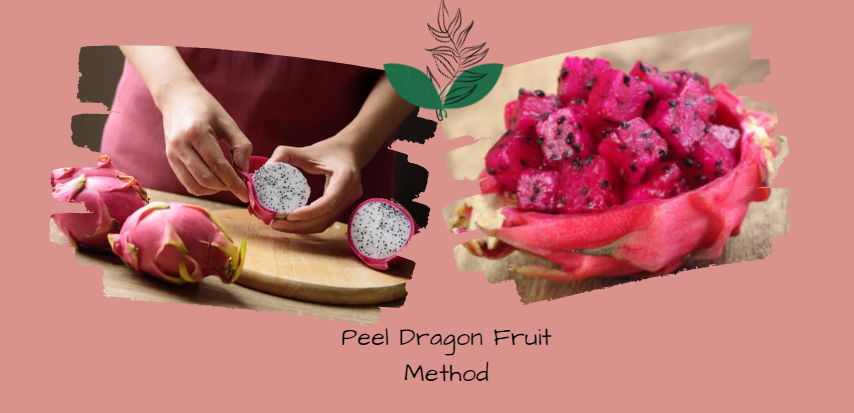
- You should then be able to lift the flesh out of the skin, or alternatively just peel the skin off using your fingers.
- Slice the flesh into smaller pieces using a paring knife.
- You can also leave some skin intact and use a spoon to eat the flesh of the fruit like how you eat kiwi fruit
Some fun Ideas to serve dragon fruit:
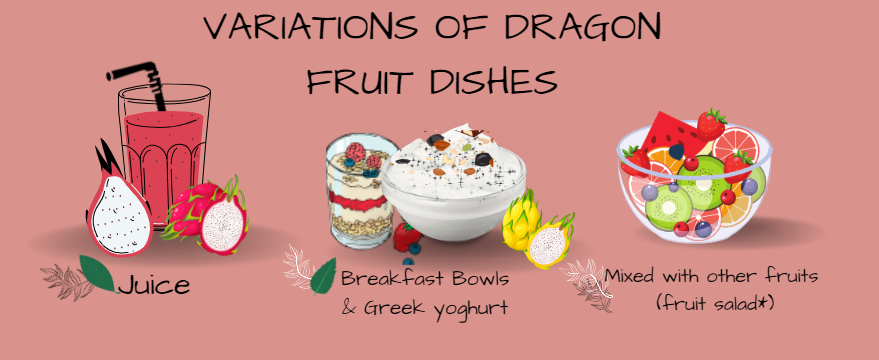
- Simply slice it up and eat it as is.
- Cut it into small pieces and top with greek yogurt and granola.
- Include it in a fruit salad, breakfast bowl, dragon fruit juice, or smoothie bowl.
- Dragon fruit is easy to prepare and can be enjoyed on its own or paired with other foods in healthy recipes.
See more: (Dragon Fruit recipes)
Fact 1: It has a High Nutritional Value
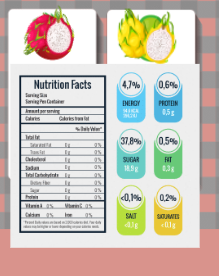
Dragon fruit is a great source of several vitamins and minerals such as iron, magnesium, and fiber. Its greater fiber content makes dragon fruits have become a good choice for people who have diabetes. This fruit also contains prebiotics which are foods that are good for the healthy bacteria found in your gut.
The dragon fruit can also be considered a highly nutrient-dense fruit, given its high levels of vitamin C and magnesium; as well as its extremely low-calorie contents. For the most part, the dragon fruit also possessed potential skin benefits from its high levels of vitamin C.
Fact 2: Provides Several Antioxidants
Other health benefits of different types of dragon fruit include containing several types of antioxidants.
As part of its potential skin benefits, these antioxidants effectively protect your cells from unstable molecules called free radicals, which are linked to chronic diseases and aging.

Here are some of the main antioxidants contained in dragon fruit flesh:
- Betalains: These are found in the flesh of red dragon fruit and it has been known that these deep red pigments protect “bad” LDL cholesterol from becoming oxidized or damaged.
- Hydroxycinnamates: Based on several test-tube and animal studies, this group of compounds or antioxidants has demonstrated anticancer activity
- Flavonoids: This is a specialized group of antioxidants or compounds that is linked to cases of better brain health, normalized blood sugar levels, and a reduced risk of heart health-related diseases
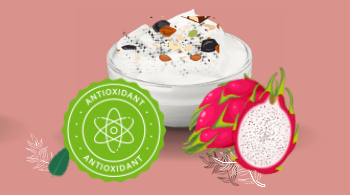
According to a study that compared the antioxidant qualities of 17 tropical fruits and berries, the dragon fruit plants had lower antioxidant levels but was shown to be the best at protecting particular fatty acids from free radical damage.
Fact 3: Most parts of the dragon fruit can be used
Another fact about this delicious fruit beyond its many potential health benefits is that most parts of the dragon fruit can be used for various things.

- Dragon Fruit seeds found in the sweet flesh are edible and resemble Kiwi seeds.
- Dragon fruit skin is also edible and is used In some cuisine. To use the skin in cooking, cut out the end parts of the fruit.
- The natural pigments of Dragon Fruit flesh are also found to be used as a dye or as ingredients in cosmetics.
- The flower buds of the fruit are also edible when cooked.
Fact 4: Summer = Dragon Fruit Season
The night-blooming fruit is in season throughout the summer, with August and September being the tropical fruit's peak months.
Dragon fruit grows on the Hylocereus cactus, also known as the Honolulu queen, whose flowers only open at night.
Something to add: The dragon fruit, which is also known as the “fruit of the cactus,” was introduced to the American market 21 years ago.
Fact 5: Dragon Fruit plant is adaptable and drought resistant.
Don't be fooled by the delicateness of this beautiful fruit. The dragon fruit plant is one of the most adaptive plants possessing drought resistance.
Dragon fruit is a tropical fruit native to Mexico and Central America and grows on a climbing cactus plant that can grow from 15-20 feet high and can live for as long as two decades. It can withstand a wide range of environmental conditions, including salinity adaption, high light intensity, and drought-prone areas.
Ready to Explore more Fruit Dishes?
Get ready to impress your family and friends with your newfound talent for making good desserts. Here at Culinary Depot, we provide the tools of the culinary trade for professionals and home cooks. If you'd like to learn more about our cutting and storing ware, contact us today.

